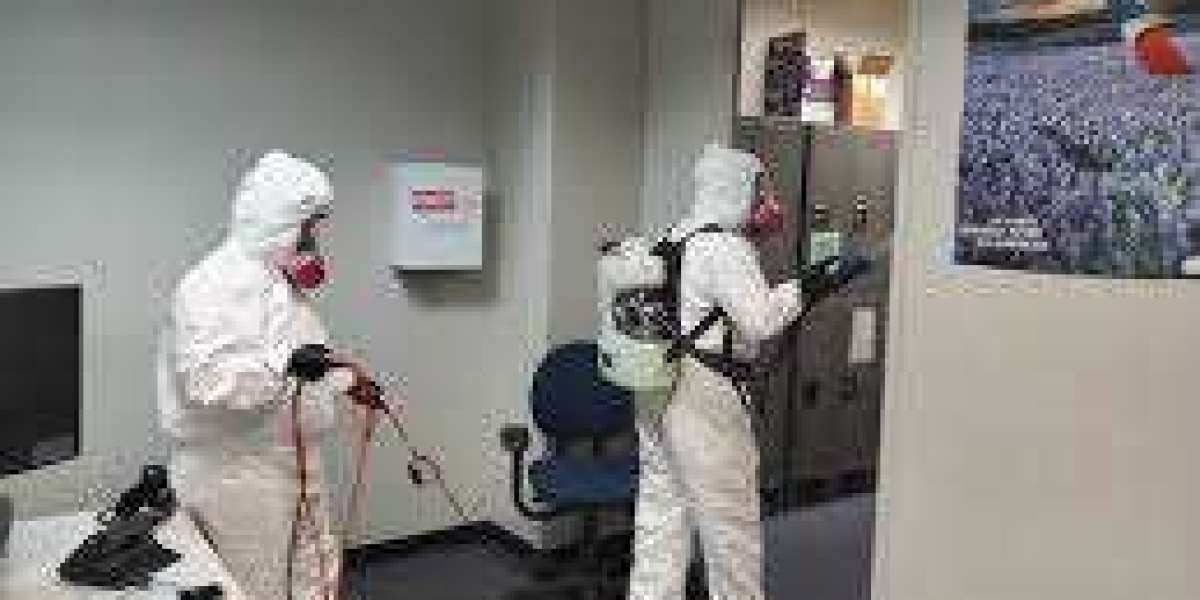When disaster strikes, whether it's due to water damage, floods, or other emergencies, restoring your property to its original condition becomes a top priority. One often-overlooked aspect of disaster recovery is biohazard cleanup. This process is essential for ensuring that your home or business is not only visually restored but also safe and sanitary.
Understanding Biohazard Cleanup
What is Biohazard Cleanup?
Biohazard cleanup refers to the removal and cleaning of biological and chemical contaminants that can pose serious health risks. These hazards can result from various incidents, including:
Crime scenes
Unattended deaths
Industrial accidents
Chemical spills
Sewage backups
Infectious disease contamination
Why is Biohazard Cleanup Necessary?
When a biohazard event occurs, it creates an environment that can be extremely dangerous. Pathogens like bacteria and viruses can thrive in these conditions, posing severe health risks. Professional biohazard cleanup ensures that all contaminants are effectively removed and the area is sanitized, making it safe for habitation or business operations again.
The Process of Biohazard Cleanup
Assessment and Containment
The first step in any biohazard cleanup is a thorough assessment of the affected area. Professionals evaluate the extent of contamination and the materials involved. Containment is then established to prevent the spread of contaminants to other parts of the property.
Removal of Contaminants
Once the area is contained, the next step is the removal of all biohazard materials. This includes physical cleaning of visible contaminants and proper disposal of hazardous materials according to local and federal regulations.
Cleaning and Disinfection
After the removal of contaminants, the area undergoes a rigorous cleaning and disinfection process. This step ensures that all pathogens are eliminated, and the area is safe. Advanced cleaning agents and techniques are used to ensure thorough sanitation.
Restoration and Deodorization
The final step in biohazard cleanup is the restoration of the affected area to its pre-incident condition. This may involve repairs, repainting, and deodorization to remove any lingering odors caused by the biohazard materials.
The Role of Technology in Biohazard Cleanup
Advanced Equipment and Techniques
Biohazard cleanup professionals use state-of-the-art equipment and techniques to ensure thorough and safe cleaning. Some of the technologies include:
HEPA Filtration Systems: High-Efficiency Particulate Air (HEPA) filters are used to capture tiny particles, including bacteria and viruses, ensuring that the air quality is safe post-cleanup.
Industrial-Grade Cleaning Agents: These agents are designed to break down and eliminate biohazardous materials effectively.
Thermal Foggers: Used for deodorization, thermal foggers release a deodorizing vapor that neutralizes unpleasant odors at the molecular level.
Personal Protective Equipment (PPE)
Safety is paramount during biohazard cleanup. Professionals wear specialized PPE, including suits, gloves, masks, and goggles, to protect themselves from exposure to hazardous materials.
Case Studies: Biohazard Cleanup in Action
Crime Scene Cleanup
One of the most common scenarios requiring biohazard cleanup is a crime scene. After law enforcement completes their investigation, biohazard cleanup professionals step in to remove blood, bodily fluids, and other contaminants. Their work ensures that the site is safe for future use, whether it's a home or a business.
Unattended Death Cleanup
When a person passes away and the body is not discovered for an extended period, it can lead to severe biohazard conditions. Cleanup in such cases involves removing decomposed materials, sanitizing the area, and addressing any structural damage caused by the decomposition process.
Industrial Accident Cleanup
Industrial sites are prone to accidents involving hazardous chemicals. Biohazard cleanup teams are trained to handle such situations, ensuring that all chemical spills are contained, removed, and the area is thoroughly decontaminated.
The Importance of Professional Biohazard Cleanup Services
Health and Safety
Attempting to clean up biohazards without professional help can be dangerous. Professionals have the training and equipment necessary to handle hazardous materials safely and effectively.
Compliance with Regulations
Biohazard cleanup is regulated by strict local, state, and federal guidelines. Professionals are well-versed in these regulations and ensure that all cleanup activities comply with the law, avoiding potential legal issues.
Peace of Mind
Hiring professional biohazard cleanup services provides peace of mind. Knowing that experts are handling the situation allows property owners to focus on other important aspects of recovery.
Choosing the Right Biohazard Cleanup Company
Certification and Training
When selecting a biohazard cleanup company, it's crucial to choose one that is certified and has well-trained professionals. Look for certifications from recognized organizations such as the Institute of Inspection, Cleaning and Restoration Certification (IICRC).
Experience and Reputation
Experience matters in biohazard cleanup. Companies with a proven track record of successfully handling various biohazard situations are more likely to deliver satisfactory results. Reading reviews and testimonials can provide insights into a company's reputation.
Comprehensive Services
A good biohazard cleanup company offers comprehensive services that cover all aspects of the cleanup process. This includes assessment, containment, removal, cleaning, disinfection, and restoration.
Frequently Asked Questions about Biohazard Cleanup
How long does biohazard cleanup take?
The duration of biohazard cleanup varies depending on the extent of contamination and the size of the affected area. While small incidents might be resolved in a few hours, larger or more complex situations could take several days.
Is biohazard cleanup covered by insurance?
In many cases, biohazard cleanup is covered by insurance. It's advisable to check with your insurance provider to understand the coverage details and any specific requirements they might have.
Can I stay in my home during biohazard cleanup?
Depending on the severity of the contamination, you might need to vacate the premises during cleanup. Professionals can advise you on the best course of action based on the specific situation.
The Future of Biohazard Cleanup
Innovations in Cleaning Technologies
The biohazard cleanup industry continues to evolve with advancements in cleaning technologies. Innovations such as ultraviolet (UV) light disinfection and nanotechnology-based cleaning agents are being explored to enhance the efficiency and effectiveness of biohazard cleanup.
Increased Awareness and Preparedness
As awareness of the importance of biohazard cleanup grows, more property owners are taking proactive steps to be prepared. This includes having emergency plans in place and knowing which professional services to contact in case of a biohazard incident.
Conclusion
Biohazard cleanup is a critical component of damage restoration that ensures safety and sanitation in the aftermath of disasters. Whether dealing with a crime scene, an unattended death, or an industrial accident, professional biohazard cleanup services are essential for restoring properties to their pre-incident conditions. With the right expertise, equipment, and techniques, biohazard cleanup professionals play a vital role in protecting public health and safety.









